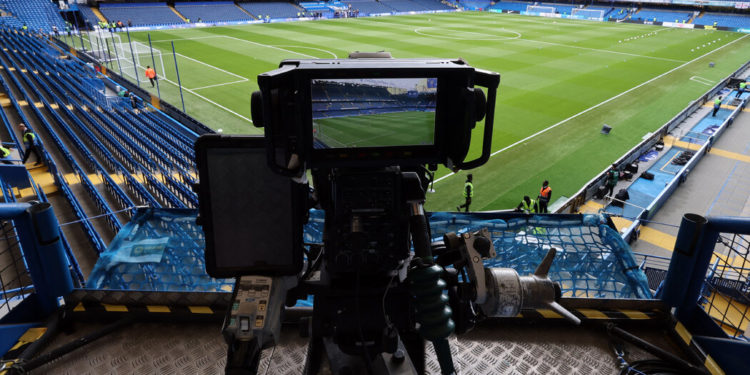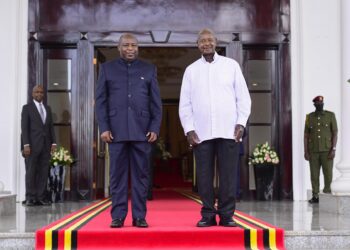By THE NEW YORK TIMES
Being early, Marc Andreessen once ruefully said, is the same as being wrong. Admittedly, Andreesen, the software engineer, angel investor and all-purpose Silicon Valley maven, deployed the maxim in the context of his own somewhat bitter experiences in the world of cloud computing, but it works surprisingly well as an analysis of “Being: Liverpool.”
If the title is unfamiliar, that would be no real surprise. The show, depicting Liverpool’s preparations for the 2012-2013 Premier League season, ran for only one series, amounting to just six episodes. Its subsequent cultural half life has been limited, too; those few elements which have lingered illustrate perfectly why it was not renewed.
There was, for example, the fleeting shot of the hallway in the home of Brendan Rodgers, the club’s newly appointed coach, that was dominated by a moody, monochrome portrait of … himself. Or the footage of Rodgers brandishing three envelopes — containing, he said, the names of three players who would let him down over the course of the season. His audience looked baffled at best and mortified at worst.
It would emerge later, of course, that both incidents were a little more nuanced than first assumed. The envelope trick had been adapted from a method once used — albeit with considerably more success — by Alex Ferguson. The portrait had been a gift from a disability charity with which Rodgers had worked closely during his time at his previous club, Swansea.
Still, the damage was done. The documentary’s critical reception was mixed, but the response from fans — of both Liverpool and others — was not. It was seen as an exercise in outright hubris, a source of either embarrassment or hilarity, six hours of unceasing cringe. Rodgers, arguably, has never been able to shake off the impression that he has at least as much in common with David Brent as he does with Pep Guardiola.
It was striking, then, to learn that Liverpool’s owner — Fenway Sports Group — is at least toying with the idea of going back to the well. Nothing has been signed as yet, according to Bloomberg, but the club is in discussions with a number of production houses over commissioning something that, you imagine, will not be called “Being: Liverpool 2.”
That Liverpool is even prepared to countenance the idea is testament to how much the world has changed. It is hard to date precisely the point at which soccer became deluged by documentaries. It might be 2015, with the launch of “Class of ’92: Out of Their League,” or a consequence of the 2019 arrival of Formula 1’s “Drive To Survive.” Maybe it was a year later, and the pandemic success of “The Last Dance.” But perhaps it does not matter. The effect is much the same.
There are, at this point, hundreds of soccer documentaries. Some are historical — portraits of players and paeans to coaches — but the trend is for the current: limited series that promise to take viewers inside the inner sanctum, to show fans what the world inhabited by their heroes is really like.
They can, like the “All Or Nothing” series, be commissioned (or at least agreed to) by teams. Or, increasingly, they can be conceived by the game’s authorities themselves, as with the FIFA-approved/produced “Captains of the World,” or the forthcoming “Drive To Survive”-style project apparently greenlit by Major League Soccer, which is slowly morphing into a division of Apple.
(“Welcome To Wrexham,” in this context, is something of an outlier. Indeed, it is not entirely clear whether it should really be cast as a documentary at all, regardless of the style in which it is shot. Documentarians, after all, are not supposed to interfere with their subject. “Welcome To Wrexham” exists only because of interference; its ongoing plot is defined by it. Even its stars refer to it, with a frequency that suggests it is deliberate, as a type of reality show.)
The same trend can be seen across sports. Almost every major athletic endeavor — cricket, rugby, cycling, tennis, track and field — has been subject to the same treatment in almost exactly the same time frame. Sports as a whole has, very quickly, adopted the principle that its business extends to more than just the action on the field. Fans also appear to have a surprising, and monetizable, appetite for learning how the sausage is made.
That can, of course, be attributed in part to a broader cultural shift. Within sports, the sheer weight of documentaries makes the idea less remarkable, less noteworthy. There is a degree of safety in numbers.
Outside it, too, the sense that everything can be content — that all of our lives can be curated and commodified for the consumption of others — has become something close to a guiding ideology. There is not just an acceptance that individuals or institutions should want to tell their story, but an expectation that they will.
From that vantage point, “Being: Liverpool” no longer looks wrong. But, unlike Andreessen’s cloud computing venture, nor was its only mistake being early.
What unites all of the documentaries that have followed in its wake is how little they actually reveal of the reality of soccer. There are, of course, noteworthy moments: José Mourinho’s unsuccessful attempts to reignite Dele Alli in the Tottenham season of “All or Nothing”; Fabian Delph taking it upon himself to explain the “basics of football,” to Guardiola’s evident confusion, in the Manchester City edition.
But mostly, they are so tightly controlled, so carefully edited, so highly polished and skilfully produced that any hope of insight is lost in the gleam. They are documentaries cast through the most flattering Instagram filter. They capture the story that the club or the individual concerned wishes to be told.
They are authentic in the sense that merchandise can be authentic, with an official stamp and a hologram watermark. They are not authentic in the way that an earlier generation of soccer documentaries, in an era of less creative control, appeared to be. They show, but they do not tell.
And that, perhaps, was the real problem with “Being: Liverpool.” It had not been buffed to the highest possible sheen. There were unguarded moments within it that showed what soccer looks like when it is not presenting its best face to the camera.
Yes, there are lots of rousing speeches and instances of intimate camaraderie that stir the soul. But also sometimes your manager tries some corporate team-building exercise in a hotel dining room and nobody really gets it. Those were the parts that made “Being: Liverpool” embarrassing, but they also made it real in a way that few of its successors can match. It is safe to say that, should a sequel make it to air, that mistake will not be repeated.
The Africa Cup of Nations is rapidly turning into something of a giants’ graveyard. Senegal and Nigeria apart, few of the continent’s powerhouses are having much luck in the Ivory Coast.
The host nation, of course, has suffered most, humiliated in its final group game by Equatorial Guinea and then qualifying for the knockouts only by the skin of its teeth, and after it had fired its manager. But Ivory Coast is far from alone. Algeria, Ghana and Tunisia all left without so much as winning a game.
Cameroon required a 91st-minute goal to avoid the same fate. Egypt — having lost Mohamed Salah to injury — cut things even finer, scoring in the 99th minute against an impressive Cape Verde to salvage a spot in the last 16. (It feels a little like every game in the tournament only really gets going once injury time rolls around.)
It is too soon for there to be a definitive explanation for this, but here are three theories, in decreasing order of probability but — crucially — increasing order of interest.
It might be just one of those things, an essentially arbitrary confluence of factors that can easily be mistaken for a pattern.
It might be a sign that Africa’s peak is flattening but its base broadening, as has been the case across much of soccer in recent years.
Or it might be the case that stars can have a double function. Of course, the likes of Salah, Mohammed Kudus of Ghana and Seko Fofana of Ivory Coast emit light, but they also exert gravity. Their presence can lead to a dependence, reducing their teammates to little more than a supporting cast. (Witness Egypt’s response to Salah’s absence.)
It is both inhibitive to their own sides and encouraging to their opponents. It is also not a problem familiar to Equatorial Guinea and Cape Verde, for example, and they seem better off for it.
Someone Else’s Cutting Edge
At this stage, Manchester United’s fans are primed to seize on even the slightest glimmer of hope as a sign of renewal. If things were as United believes they should be, and England’s biggest club was bestriding the Premier League like a colossus, then the hiring of an executive would be little more than a footnote. Seeing as they are not, an awful lot is being read into the appointment of Omar Berrada.
Berrada, a Catalan, is, of course, the first appointment made by Ineos, the Jim Ratcliffe-owned conglomerate freshly installed as both minority investor and majority controller of the “football” bit of what used to be Manchester United Football Club. The arrival of Berrada as chief executive has been taken (understandably) as a sign of the vision that Ineos — an organization that has long regarded itself as being at the cutting edge of sports — has for Old Trafford.
But while Berrada is without question a canny hire — smart, well regarded, great taste in whom to follow on Twitter — and while snatching him from Manchester City is a popular move, it is a bit of a stretch to praise it as an innovative decision. United has gone to the best-run club (asterisk pending) in soccer and taken the highest-ranking executive it could find. That is a clever move. It is not a novel one.







Discussion about this post